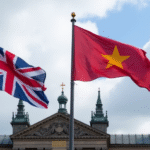Introduction
Mexico City resembles a post-war scene, and the only thoughts that come to mind are Curzio Malaparte’s writings, The Skin, during the aftermath of World War II, when I see these horrifying barriers deployed across our city by the current government, plunging its inhabitants into a state of psychological depression, uncertainty, and disorder; it’s absolute desperation in the face of the present we try to build each day.
Historical Context and Comparison
The Palacio Nacional, along with the Glorieta del Ahuehuete and Monumento a la Revolución, has been surrounded by these grotesque barriers for years. These barriers mar the architectural beauty of avenue Reforma, the most beautiful street we have. The U.S. Embassy and its surrounding streets display these barriers with particular menace, diverting traffic without explanation. These barriers are erected like cattle pens.
These aesthetically crude, violent, and vandalized barriers are an insult to the sensitivity, finery, and art of the architectural spaces mentioned. The barriers symbolize political incapacity rather than law and order, acting as a giant diaper covering inadequacy.
Authorities claim these barriers are due to fear of demonstrations, but they deny dialogue instead of fostering it. They obscure our historical monuments and buildings rather than protecting them. The real question is, what are they safeguarding: our historical heritage or the fleeting power hidden behind them?
In contrast, Tenochtitlan’s walls were made of water and stone, not gray iron. These albarradas signified defense and cosmic order rather than fear of the people. They protected against floods, regulated lake life, and maintained a balance between humanity and the divine. The Mexican wall safeguarded life.
Current Impact on the City
Today’s walls do not defend; they suffocate and deny the beauty of Mexico City, reducing its inhabitants to extras in an occupation film. This is the aesthetic of psychological encirclement, making the city feel like a besieged field. The fear is not of external threats but of controlling protests.
These barriers remain even after demonstrations, suggesting a plan to maintain them throughout the six-year term. They prevent us from admiring Mexico City’s grandeur and have turned the Zócalo into a constant, caged fairground. It should be a unique contemplation space but is now a concert venue with its corresponding bars, rather than the ancient center of the universe and starting point of Mexico’s New World.
The City Belongs to Its People
Cities are meant for living in, experiencing, and should evoke happiness, awe, pride, and a sense of integration. They must inspire feelings of stability, freedom, and hope for the future. When monuments are walled off, it’s not stone being defended; it’s power admitting fear.
Key Questions and Answers
- Why are barriers being erected around historical monuments and buildings? Authorities claim it’s due to fear of demonstrations, but critics argue these barriers deny dialogue and obscure historical sites rather than protect them.
- What is the true purpose of these barriers? The real question is whether they aim to protect historical heritage or conceal temporary political power.
- How do these barriers affect the city and its inhabitants? They mar the architectural beauty, reduce citizens to feeling like extras in an occupation scenario, and prevent the city from being experienced as intended—a place of contemplation, stability, freedom, and hope.






